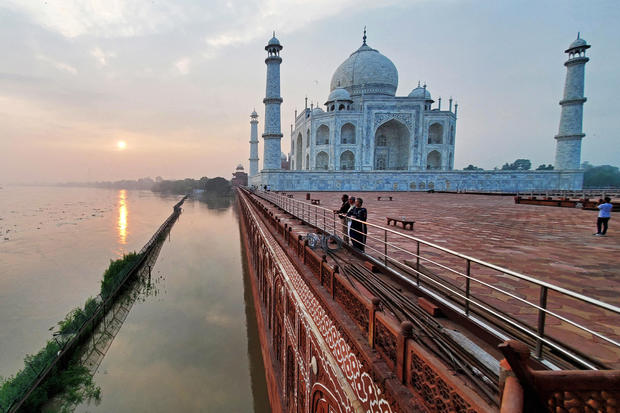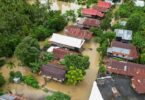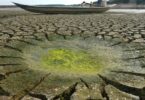NEW DELHI: India’s monsoon-rain-swollen Yamuna river, which flooded parts of Delhi last week, has become so engorged that its waters were lapping Wednesday at the walls of India’s most iconic monument and tourist attraction, the Taj Mahal. It’s the first time in almost half a century that the Yamuna’s waters in Agra, where the Taj Mahal is located, have touched the outer walls of the 17th-century white marble monument. The last time this happened was in 1978.
Photos and videos shared by people on social media showed a garden located behind the Taj Mahal submerged, and water touching the red stone outer walls of majestic Taj Mahal compound.
The Archaeological Survey of India (ASI), which maintains the UNESCO World Heritage site, said the monument was not under threat.
“It is unlikely that the floodwater will enter the monument. The ingenious design of the structure rules out such threats. Water cannot enter the main mausoleum even during high floods,” Raj Kumar Patel, Superintendent Archaeologist at the ASI, was quoted as saying by The Indian Express.
It is rare for the Yamuna – a key tributary of the mighty river Ganges, which runs through the states of Delhi, Haryana, and Uttar Pradesh – to rise so high as to pose a threat. While the monsoon rains that lash India every year from June through September do bring floods regularly, record rainfall this season had brought unusual, deadly flooding across a wide swathe of northern India.
Parts of the capital Delhi were flooded last week as Yamuna overflowed, grinding life in the city of some 30 million people to a halt. Other Himalayan states such as Uttarakhand, Himachal Pradesh, Haryana and Punjab also saw large-scale devastation due to landslides and house collapses – resulting in almost 100 deaths.
On Tuesday, the Yamuna’s water level in Agra was 498 feet – at least three feet above the low flood level, officials said, and the river was expected to go over the 500-foot mark in the coming days as more water was being released into it from at least two dams.
Police, government, and rescue workers have evacuated people from 50 villages and 20 urban neighborhoods in low-lying areas of Agra and surrounding areas as the water creeps into homes.
Around a 100 villages were without electricity and drinking water Wednesday, according to the Times of India.
Extreme weather events like this year’s monsoon rains are increasing in frequency and intensity due to climate change, experts have said, putting millions in the country of 1.42 billion at risk.
Air pollution, which is a significant contributor to the warming climate, is also threatening the Taj Mahal. The city has consistently remained near the top of global charts ranking the world’s most polluted cities. In 2018, India’s toxic air turned the white marble of the monument hues of brown and green.
Courtesy: cbsnews







